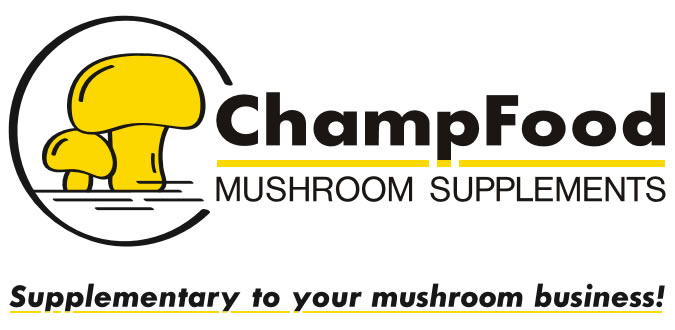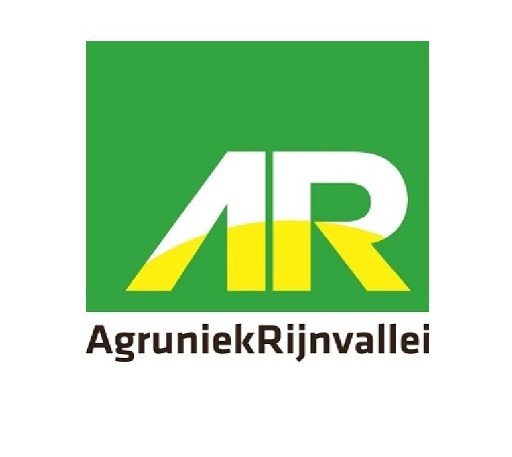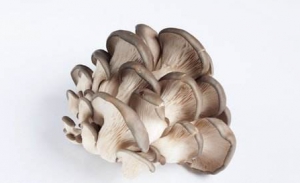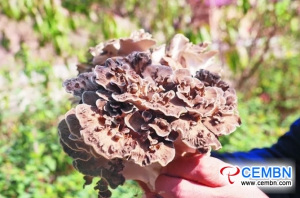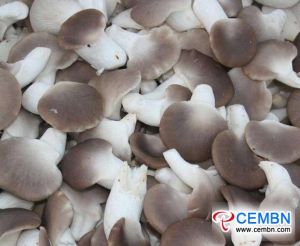
Mushroom Matter
Welcome on our platform. Why MUSHROOM MATTER? Because mushrooms play an important role in our lives as well in business. Our goal is to bring the world the very latest mushroom news with the upmost care to support the positioning of our beloved Mushroom.
Liaoning Shengfa Market: Analysis of Mushroom Price
According to mushroom quotation provided by Liaoning Shenyang Shengfa Fruit & Vegetable Market, on November 25, Shiitake mushroom, Pleurotus geesteranus, Enoki mushroom, Button mushroom, Drumstick mushroom, White beech mushroom and Cordyceps militaris are 7 varieties that show price rise.
1. Price of Shiitake mushroom has risen from 9 to 11 CNY per kg, indicating 22% of increase range.
2. Price of Pleurotus geesteranus has risen from 9 to 10 CNY per kg, indicating 11% of increase range.
3. Price of Enoki mushroom has risen from 5.5 to 6 CNY per kg, indicating 9% of increase range.
4. Price of Button mushroom has risen from 13 to 15 CNY per kg, indicating 15% of increase range.
5. Price of Drumstick mushroom has risen from 8 to 9 CNY per kg, indicating 13% of increase range.
6. Price of White beech mushroom has risen from 15 to 16.7 CNY per kg, indicating 11% of increase range.
7. Price of Cordyceps militaris has risen from 12 to 13 CNY per kg, indicating 8% of increase range.
On the contrary, by November 25, King oyster mushroom, Agrocybe cylindracea, Oyster mushroom and Pholiota nameko are 4 mushroom varieties that show price fall.
1. Price of King oyster mushroom has dropped from 7 to 6.5 CNY per kg, indicating 7% of decline range.
2. Price of Agrocybe cylindracea has dropped from 13.7 to 13 CNY per kg, indicating 5% of decline range.
3. Price of Oyster mushroom has dropped from 7.8 to 7 CNY per kg, indicating 10% of decline range.
4. Price of Pholiota nameko has dropped from 10 to 9.3 CNY per kg, indicating 7% of decline range.
“Price of Superior Shiitake mushroom, Brown Shimeji mushroom and Seafood mushroom is at 12 CNY, 19.2 CNY and 10 CNY per kg,” introduces manager of Liaoning Shenyang Shengfa Fruit & Vegetable Market warmly.
Shanxi Hexi Market: Analysis of Mushroom Price
According to mushroom quotation provided by Shanxi Taiyuan Hexi Agricultural Products Market, on November 19, Oyster mushroom and Drumstick mushroom are 2 varieties that show price rise.
1. Price of Oyster mushroom has risen from 4 to 6 CNY per kg, indicating 50% of increase range.
2. Price of Drumstick mushroom has risen from 15.6 to 16 CNY per kg, indicating 3% of increase range.
On the contrary, by November 19, Shiitake mushroom, Superior Shiitake mushroom, King oyster mushroom, Button mushroom and Pleurotus geesteranus are 5 mushroom varieties that show price fall.
1. Price of Shiitake mushroom has dropped from 12 to 10 CNY per kg, indicating 17% of decline range.
2. Price of Superior Shiitake mushroom has dropped from 15 to 13 CNY per kg, indicating 13% of decline range.
3. Price of King oyster mushroom has dropped from 6 to 5.5 CNY per kg, indicating 8% of decline range.
4. Price of Button mushroom has dropped from 10 to 8 CNY per kg, indicating 20% of decline range.
5. Price of Pleurotus geesteranus has dropped from 9.2 to 8.3 CNY per kg, indicating 10% of decline range.
“Price of White beech mushroom, Enoki mushroom, Agrocybe cylindracea, Brown Shimeji mushroom and Seafood mushroom is respectively at 15 CNY, 5.5 CNY, 14 CNY, 18.3 CNY and 10.4 CNY per kg,” introduces manager of Shanxi Taiyuan Hexi Agricultural Products Market warmly.
Anhui Zhougudui Market: Analysis of Mushroom Price
According to mushroom quotation provided by Anhui Zhougudui Agricultural Products Wholesale Market, on November 14, Brown Shimeji mushroom, Seafood mushroom and Cordyceps militaris are 3 varieties that show price rise.
1. Price of Brown Shimeji mushroom has risen from 15 to 16.7 CNY per kg, indicating 11% of increase range.
2. Price of Seafood mushroom has risen from 8 to 9 CNY per kg, indicating 13% of increase range.
3. Price of Cordyceps militaris has risen from 17 to 20 CNY per kg, indicating 18% of increase range.
On the contrary, by November 14, Drumstick mushroom, White beech mushroom, Agrocybe cylindracea, Pleurotus geesteranus, Oyster mushroom and Pleurotus nebrodensis are 6 mushroom varieties that show price fall.
1. Price of Drumstick mushroom has dropped from 10.5 to 10 CNY per kg, indicating 5% of decline range.
2. Price of White beech mushroom has dropped from 15 to 13.3 CNY per kg, indicating 11% of decline range.
3. Price of Agrocybe cylindracea has dropped from 12 to 11 CNY per kg, indicating 8% of decline range.
4. Price of Pleurotus geesteranus has dropped from 10.5 to 10 CNY per kg, indicating 5% of decline range.
5. Price of Oyster mushroom has dropped from 5 to 4 CNY per kg, indicating 20% of decline range.
6. Price of Pleurotus nebrodensis has dropped from 28.3 to 26 CNY per kg, indicating 8% of decline range.
“Price of King oyster mushroom, Enoki mushroom, Shiitake mushroom, Button mushroom and Black fungus is respectively at 5.5 CNY, 6 CNY, 13 CNY, 12 CNY and 7 CNY per kg,” introduces manager of Anhui Zhougudui Agricultural Products Wholesale Market warmly.
The Thirteenth Chinese Mushroom Days
The Thirteenth Chinese Mushroom Days will take place from November the 16th until November the 19th.
Canned Mushroom Capital of the World • Canned Food Capital of China • Chinese Mushroom Capital • Zhangzhou, Fujian, China
Agenda
Session 1: Lambert Spawn Workshop, November 15-16
Session 2:Industry exhibition of the 13th Chinese Mushroom Days, November 16-19
Session 3:Registration of the 13th Chinese Mushroom Days, November 16
- Parallel conference 1:The 5th meeting of the 1st Committee of the National Strategic Alliance for
Equipment Innovation of Mushroom Industry & The 3rd meeting of the 1st Committee of Jiangsu Strategic
Alliance for Equipment Innovation of Mushroom Industry
- Parallel conference 2:The 8th Enlarged Meeting of the 4th Council of Fujian Mushroom Association
Session 4:The 13th Chinese Mushroom Days, November 17-19
Section 1. Opening Ceremony of the 13th Chinese Mushroom Days, November 17
Section 2. Keynote Speech of the 13th Chinese Mushroom Days, November 17
Section 3. Forum of international button mushroom industry, November 17
Section 4. Forum on "The Belt, Road and Mushroom"& Globalization, November 17
Section 5. Crowdfunding Dinner of "The Night of Button Mushrooms", November 17
Section 6. Roundtable Forum on "The Belt, Road and Mushroom" & Globalization - shiitake-log export focus, November 18
Section 7. The Big Discussion: How to open up the production end and consumer end of mushrooms & How to make mushroom products far-reaching, November 18
Section 8. Forum of Energy Management, Environmental Control and Automation in Edible Mushroom Factory, November 18
Section 9. Roundtable Forum on Automation and Intelligentization of Mushroom Bag Cultivation Equipment, November 18
Section 10. Roundtable Forum on Comprehensive Utilization of Mushroom Waste, November 19
Section 11. International Forum on Technology and Product Frontiers of Mushroom Industry, November 19
Session 5: Intermediate and Advanced Training Course on Mushroom Bio-technology and Health-care Industry, November 20-24
Click here for the complete and detailed program!
Learned from Guangyue Mushroom Farm, under the guidance from Agriculture Bureau of Wuyi County, Jinhua City of Zhejiang Province, it has artificially realized the soilless cultivation of Grifola frondosa after 2 years of endeavour.
“Now, Grifola frondosa are evolving into the maturation from over 60,000 mushroom sticks, output on each stick reaches 300g or so,” introduces person in charge of Guangyue Mushroom Farm excitedly, going on that compared with earth-up technology, soilless cultivation technology highlights a series of merits such as impurity-free on sporocarps, convenient management, easy-to-harvest, superior quality and high efficiency. Grifola frondosa cultivated by this way are sold at 32 CNY per kg, and they are in tense supply.
According to mushroom quotation provided by Guangdong Haijixing Agricultural Products Market, on November 8, Oyster mushroom, Agrocybe cylindracea, Brown Shimeji mushroom and Pleurotus geesteranus are 4 varieties that show price fall.
1. Price of Oyster mushroom has dropped from 12 to 10 CNY per kg, indicating 17% of decline range.
2. Price of Agrocybe cylindracea has dropped from 12 to 10 CNY per kg, indicating 17% of decline range.
3. Price of Brown Shimeji mushroom has dropped from 20.8 to 20 CNY per kg, indicating 4% of decline range.
4. Price of Pleurotus geesteranus has dropped from 18 to 16 CNY per kg, indicating 11% of decline range.
On the contrary, by November 8, Straw mushroom, King oyster mushroom, Enoki mushroom and White beech mushroom are 4 varieties that shows price rise.
1. Price of Straw mushroom has risen from 26 to 28 CNY per kg, indicating 8% of increase range.
2. Price of King oyster mushroom has risen from 6 to 6.5 CNY per kg, indicating 8% of increase range.
3. Price of Enoki mushroom has risen from 5.5 to 6.5 CNY per kg, indicating 18% of increase range.
4. Price of White beech mushroom has risen from 15 to 15.8 CNY per kg, indicating 5% of increase range.
“Price of Shiitake mushroom, Superior Shiitake mushroom, Black fungus, Button mushroom and Seafood mushroom is respectively at 14 CNY, 16 CNY, 5.6 CNY, 12 CNY and 10 CNY per kg. Recently, price of mushroom is generally stable in our market. And, as weather gets cold, sales of mushroom is expected to go up,” introduces manager of Guangdong Haijixing Agricultural Products Market with enthusiasm.
New research aimed at furthering understanding of mushrooms’ nutritional qualities will focus on cognitive health and mushrooms’role in healthy eating patterns
With mushrooms growing in awareness and consideration among consumers nationwide, the Mushroom Council is making a $1.5 million investment in research to help broaden understanding of the food’s nutritional qualities and overall health benefits.
In its September 5 board meeting, the Mushroom Council voted unanimously for the two-year research initiative. The vote came after a nutrition summit in April to identify research priorities, followed bya request for and review of proposals over the summer.
“This is an auspicious time for the mushroom industry. Awareness has never been higher and adoption of techniques like The Blend™ continue to keep mushrooms top of mind,” said Bart Minor, president and CEO of the Mushroom Council. “Prior to the passage of the Mushroom Promotion, Research and Consumer Information Act of 1990, little was known about the health and nutrition benefits of mushrooms. The industry’s commitment to research over the decades has significantly advanced our understanding and appreciation for mushrooms’ inherent nutrition qualities. We look forward to continuing this commitment with the next chapter of research investment.
”In April, the Mushroom Council invited 26 researchers and council board memberswhoreviewedpast council research projects and established criteria for new project proposals. Following the summit, the group identified neurocognition and food pattern modeling as research priority areasand issued two requests for proposals to the nutrition research community. The council received 15 proposals that were reviewed by the council’s scientific Research AdvisoryPanel. The final proposals recommended for funding at the September board meeting include:
• Nutrimetabolomics* and markers of health promotion of mushrooms in healthy eating patterns.
• Modeling the effects of substituting and/or adding a full serving of mushrooms to healthy eating patterns.
• Insights into mushrooms’ relationship with cognitive health in older adults.
• Study on mushrooms’ impact on brain health inanimal modeling.
• Investigating mushroom consumption and preference among preschoolers.
• Analysis of mushrooms for bioactives/ergothioneine for inclusion in USDA database.
Since 2002, the council has conducted research that supports greater mushroom demand by discovering nutrient and health benefits of mushrooms. Published results from these projects form the basis for communicating these benefits to consumers and health influencers.
(*Nutrimetabolomicsis the identification of mushroom-specific compounds, their absorption and excretion, and relationship to improved health).
About the Mushroom Council
The Mushroom Council is composed of fresh market producers or importers who average more than 500,000 pounds of mushrooms produced or imported annually. The mushroom program is authorized by the Mushroom Promotion, Research and Consumer InformationAct of 1990 and is administered by the Mushroom Council under the supervision of the Agricultural Marketing Service. Research and promotion programs help to expand, maintain and develop markets for individual agricultural commodities in the United States and abroad. These industry self-help programs are requested and funded by the industry groups that they serve.
For more information, visit mushroomcouncil.com.
Contact:
Eric Davis
+1 612-424-7545
This email address is being protected from spambots. You need JavaScript enabled to view it.
I am losing my quality
Imagine the third picking day of a first flush. In the morning the pickers are picking a beautiful mushroom. Around noon the mushrooms are starting to lose colour and 3 hours later they start growing like mad. Stems are stretching and caps are getting soft.
Does that sound familiar?
In that case look at the casing. If you start checking the casing it is very well possible that it is getting warmer. The differential between ambient temperature and casing temperature is gone. This means that the evaporation has almost or completely stopped. In other words: the casing soil is too dry.
Watering at that moment is too late. If water is applied at this moment the mushrooms will lose the colour completely and bacterial blotch is the next problem.
To solve that problem the grower has to look at the next room where the next flush is coming. In the last days of outgrow water can be given on mushrooms that have the size between a pea and a cherry. Generally, that is about 3 days before the start of the harvest of the first flush. The amount of water can be around 2 litres per m².
Just one watering can be enough to solve this problem.
But only if the rest of the circumstances are okay. A good open and heavy casing soil which can hold that water.
And good selective picking so the outgrow of the flush during the harvest is more gradual and not explosive.
It is possible to detect the moment when the casing is drying out by using an infrared thermometer. If the casing soil temperature is getting up, the casing dries out. The right watering moment is just before that point.


